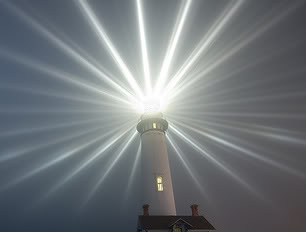Forum Replies Created
-
Hi. Please read this one. I couldn’t find out how to delete the other two.
Thanks!
-
What of a hypothetical scenario of how there’s two objects that travel in opposite directions, at almost the velocity of light, say each 98% c, relative to an observer? Wouldn’t the combined velocity of the objects almost reach double the velocity of light? or 196% c? Of course, the Lorentz Transformation is said to reduce the linear velocity of objects that exceed c, to under c. So if the math of the Lorentz Transformation is applied to the example I just mentioned, how much would it reduce almost 2c, to under 1c?
-
This reply was modified 9 months, 4 weeks ago by
 Jerry.
Jerry.
-
This reply was modified 9 months, 4 weeks ago by
-
Hi. I’m unfamiliar with much “high level” math. Doesn’t the Lorentz Transformation mathematically slow down objects that would (linearly) reach or exceed the velocity of light?
-
Hi all! Sorry it took me a while. 🙂
Here’s a question that, of course, seems quite important.
How exactly does light propagate?
I know of at least 4 possible ways.
That the velocity of light is constant.
That the velocity of light is variable.
(And that c may vary either of these two possible ways.)
That c varies with the light source and observer relative to each other.
That c varies with the light source and observer relative to the stationary ether.
And finally,
That light is instantaneous and doesn’t travel at all.
All of these answers seem to have their weakness or inconsistencies.
-
The second postulate of Special Relativity is the constancy of the velocity of light. Where c is always “clocked” at the same 186,282 miles per second, regardless of how fast the observer or light source travels relative to each other.
Here’s a thought experiment. What if a spacecraft were to travel with and in the same direction as a light wave at almost the velocity of light relative to the source, and that also within the spacecraft, another source of light propagates into the same direction? If the velocity of light is actually constant, the spacecraft’s velocity allegedly wouldn’t add to the velocity of the light wave within the spacecraft. That each of these lights would travel at exactly the same velocity of 186,282 m/s. Of course, simple common sense would tell us (and for good reason) that this effect sounds impossible.
What of all that additional distance that seems somehow misplaced within the equation? This paradox was cleverly avoided by exclaiming the “relativity of time and space”. That time dilates (slows or increases its pace), and the distance (or space) compresses or expands (or “warps”) to account for the discrepancy.
If light isn’t constant, and is instead variable, and dependent upon the relative motions of the observer and light source, wouldn’t the light waves (the one within the spacecraft and the one outside) travel at much different velocities? Of almost the full 186,282 m/s of a difference, relative to each other. And that the light within the spacecraft would combine with the actual velocity of the spacecraft itself, to reach almost double the velocity of light?
-
-
Hi everyone.
I’m currently in the process of editing the material I’ve written regarding this topic.
However, here is something that I wrote the other day at another site.
of how light seems to propagate
The constancy of c has always seemed questionable. The idea that the velocity of light is always the same, regardless of how fast the light source or observer travels, has many inconsistencies. For example, it would seem impossible if a given object or observer were to actually reach c. If the observer travels with the light wave, at the same velocity as the light itself, isn’t the light then “stationary” relative to the observer?
How would “stationary light” even look? What if a person within a spacecraft could accelerate up to the point to where he travels faster than light? Would he find himself within the light which had just previously surpassed him? I’d guess that Einstein had probably realized that others would recognize these discrepancies, so he exclaimed that “nothing may travel as fast or faster than the velocity of light”. That might have seemed a clever way to temporarily escape that puzzling paradox.
It seems the only possible alternatives to “the constancy of c”, is that the velocity of light varies, which is either dependent upon the positions and motions of the light sources and objects relative to each other, or the light sources relative to the alleged “stationary” ether. The only other alternative that I can think of, is that light is instantaneous. However, it seems that all of these theories aren’t without detectable difficulties.
-
I had the thought that the moon could possibly absorb much of the gravity of the sun, instead of just preventing gravity’s further propagation to the earth. Is this sort of what you meant, except that the ether is also involved?
Here’s a thought I had as to why a pendulum might “wobble”, when the complete solar eclipse is in effect. If a metal coin, for instance, were placed between the poles of a horseshoe magnet, it doesn’t ever just “stay there”. It is always quickly assigned to one pole or the other. And even if you try to hold the coin perfectly between the magnet poles, you can feel the constant unsteadiness of the coin’s ever-present condition, as it is drawn quickly to one pole or the other. The more you try to keep it in the mid-point position, the more it seems to vary to which pole it is drawn to. </font>
Is a similar principle possibly at work with the eclipse? The moon is in the way of the sun, and you can actually see the light that exists all around the edge of the eclipse. It creates a sort of “silver lining” around the moon. This bright thin circle is possibly the main source of gravity that the sun propagates that reaches the area of earth with which the complete eclipse is visible. So when the pendulum is present through the eclipse, maybe it can’t quite (figuratively) “decide” which direction to sway?
-
This reply was modified 8 months, 2 weeks ago by
 Jerry.
Jerry.
-
This reply was modified 8 months, 2 weeks ago by
-
Thanks, John-Erik.
When you mentioned “Sun contribution”, did you mean the Sun’s gravity? So does the Sun and Moon’s gravity each combine with each other to generate more gravity than usually experienced on Earth? or that the Moon “gets in the way” of the Sun, thus creating a reduced degree of gravity, except only within the area the eclipse is visible?
When you wrote “the effect becomes converted to motion” was this meant as the effect of why the pendulum wobbles? Does the area affected by the eclipse either compress or expand? or something else? This seems sort of similar to length contraction. Where the area undergoes a temporary physical transformation. How was all this discovered? When I looked it up there didn’t seem much documented knowledge about it. Is there a link you could provide? Thanks!
-
Hi Marco. You wrote,
Why I write “on earth”? Because the theory is based on 2 hypothesis :
- The laws of physics are invariant (identical) in all inertial frames of reference (that is, frames of reference with no acceleration).
- The speed of light in vacuum is the same for all observers, regardless of the motion of light source or observer.
I think the first hypothesis is more theoretical then the second one.
I would say the first postulate is theoretical, though easy to apply with real life “experiments”, such as simple as bouncing a ball on the “stationary” ground, and comparing that to bouncing the ball on a bus that travels at a constant velocity. This seems easily demonstrable. My view is that the second postulate seems inaccurate, which is the constancy of c. It is this that leads to inconsistencies that time dilation is said to fix.
-
Hi Marco.
Is the concept of time dilation accurate in your view? What of the theory of Special Relativity, in General (get it? lol)? Would you completely agree with it?
-
Have you ever considered the possibility that the Lorentz Transformation was just a mathematical loophole to disguise the detectable inconsistencies of Special Relativity? I’ve heard it was invented before Special Relativity though. Why would Lorentz (and other possible founders of the theory) want to provide a way to observe a universal limit of velocity (c) that wasn’t yet established (at that time)?
-
Thanks, Marco.
So did you mean to say that even already lower than c velocities also involve the Lorentz Transformation?
Also, you wrote, “for a velocity of 2c, the velocity appear of tanh(2)=0.964c and so on.”
If the velocity of 2c is also possible “linearly”, and affected by the Lorentz Transformation to lower to under 1c, then how high up could you go? If 2c is reachable, what of 4c or even up to a million c? At what point (if any) is the linear velocity too high?
-
You know, would it subtract the higher percentage number to, say, almost the velocity of light (that is almost 1c) or would it go down to say, half c, or even lower?
-
Thanks, Marco.
You know how at least one aspect of the Lorentz Transformation reduces the velocity of an object that would linearly exceed the velocity of light? That’s what I want to specifically ask about. How much is the velocity of an object lowered when its linear velocity highly exceeds c? Say even almost double c?
-
Hi John-Erik.
Actually, it was me who “copied and pasted” the line that you wrote,
“that light takes a longer way in the reference arm in MMX.”
Though I failed to print out the words before that, which stated,
“The problem started when Potier said….”
This was just a careless mistake I made when I tried to express your point.
Sometimes we might misunderstand what the other person had intended.
That’s okay though. So don’t worry.
We could have plenty of meaningfulness to this debate.
We can ask more questions and get further clarification of the ideas.
I plan to express more ideas that involve “instantaneous light”.
I want to edit and expand upon what I’ve already written.

